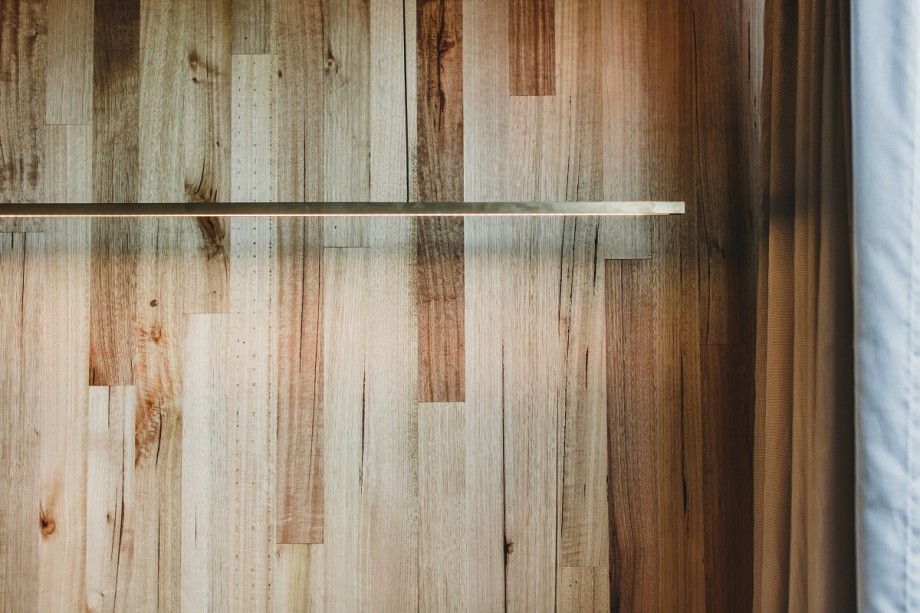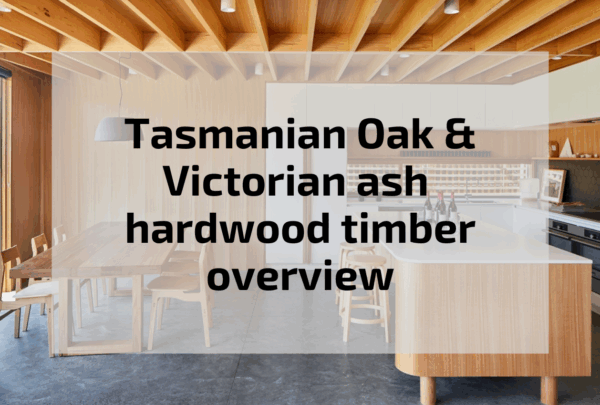Although they share many similarities, including species makeup, there are some minor differences between Victorian ash and Tasmanian Oak hardwood.
And whilst Victorian ash is no longer available in the market, Tasmanian Oak (marketed by ASH as Australian Oak), remains one of Australia’s most trusted and versatile hardwoods.
ASH have an ongoing and reliable supply of Tasmanian Oak which you can read more about here.
| Feature | Victorian ash | Tasmanian Oak |
|---|---|---|
| Species | Eucalyptus Regnans (Mountain Ash) and Eucalyptus Delegatensis (Alpine Ash) | Eucalyptus Regnans (Mountain Ash), Eucalyptus Delegatensis (Alpine Ash) and Eucalyptus Obliqua (Messmate) |
| Source region | Victoria | Tasmania |
| Colour | Blonde to straw to light brown | Blonde to pale pink browns |
| Durability class | Class 3 (above ground) Class 4 (below ground) | Class 3 (above ground) Class 4 (below ground) |
| Availability | No longer available Australia-wide | Readily available and ongoing supply through ASH. Marketed as Australian Oak |
| Lyctid susceptibility | Not susceptible | Susceptible |
| Janka rating | 4.7 | 5.5 |
All other aesthetic and structural characteristics are effectively unchanged.
Victorian Ash and Tasmanian Oak timber come from two near-identical groups of eucalypt species. Victorian ash is limited to Eucalyptus delegatensis and Eucalyptus regnans. Tasmanian Oak has both of these with the addition of Eucalyptus obliqua. While there are some minor differences between the two types of hardwood timber that are listed below, there are a remarkable number of similarities, which is why they are often used interchangeably.
Tasmanian Oak (Australian Oak) can be one of Eucalyptus Regnans (Mountain Ash), Eucalyptus Delegatensis (Alpine Ash) and Eucalyptus Obliqua (Messmate). This mix of hardwood species ranges from straw blonde to pale and dark pink through to chocolate blonde. The younger growth tends to be lighter in colour, while the older trees can be darker across the spectrum. This is what gives Tasmanian Oak hardwood a much larger variation in colour.
The versatility and adaptability of Tasmanian Oak timber makes it a perfect building material for finished and structured flooring applications. Tasmanian Oak is a perfect material when building balustrades and staircases because it has minimal shrinkage after it has dried. The flexible nature of the timber also results in it being highly used in F17 seasoned structural framing, which is one of the highest grades commercial framing timber can receive. A favourite for furniture making and window joinery, the timber enables a breadth of applications and uses.
Apart from adding a luxurious touch to indoor spaces, the timber is also very easy to install.
Tasmanian Oak timber, also known as Tassie Oak, has a good level of durability and has a Janka rating of 5.5. It is very easy to work with and offers an amazing texture and colour.
 Five Yards by Archier shows the Tasmanian oak colour range
Five Yards by Archier shows the Tasmanian oak colour range
Victorian Ash is either Eucalyptus regnans (Mountain Ash) or Eucalyptus delegatensis (Alpine Ash). This mix of hardwood species ranges from straw to pale blonde and straw pink.
Previously, when Victorian ash was available, the Victorian climate allowed effective drying of all thicknesses, which is why Victorian Ash millers focused on 38 & 50mm thick material with a smaller percentage of 19 & 25mm thick material produced. The thinner end sections were used for small mouldings, flooring, lining and furniture while 38 & 50mm was used in windows, stairs, doors, furniture, structural material and much more.
An impressive quality of Victorian Ash timber was that it is very easy to work with machine tools and by hand, resulting in it having a wide range of practical uses.
Victorian Ash timber wasn’t necessarily known as the most durable of timbers yet still possessed a good level of durability and resistance to insects. Victorian Ash timber has a Janka rating in the 4.5 range, which means this type of timber was ideally suited for indoor applications.
 Five Yards by Archier shows the variation in Victorian ash colour
Five Yards by Archier shows the variation in Victorian ash colour
Although they share many similarities, including species makeup, there are some minor differences between Victorian Ash and Tasmanian Oak.
Regarding the basis of colour, figure and grain when differentiating veneer, the subtle differences between Tasmanian Oak and Victorian Ash become more visible. Though both similar in terms of light tones, from a veneer perspective, ‘Oak’ is referenced towards darker coloured veneers while ‘Ash’ is referenced towards lighter coloured veneers.
Both species are suitable for many of the same applications and historically were often used in unison. The main uses for Tasmanian Oak and Victorian Ash hardwood timber include:
The quality of species can depend on the timber mill, grading and their processes. If ever any doubt, contact the ASH team or specify Australian Oak (Tasmanian Oak) for your next project.
Australian Oak (Tasmanian Oak) is readily available with secure, ongoing supply through ASH. Place an order or enquire further by contacting us below.
For East Gippsland manufactures and builders, or DIY enthusiasts, check the ASH Retail Centre to purchase directly from the mill.
Victorian ash is no longer available as a resource Australia-wide.
"*" indicates required fields
